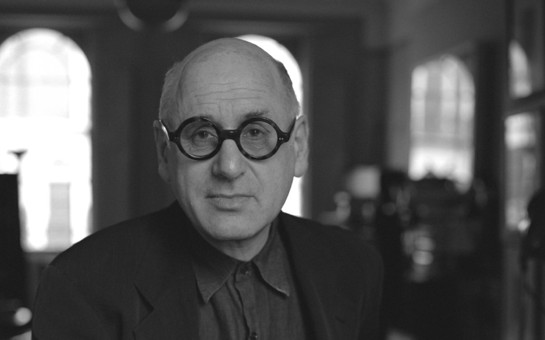- Michael Nyman
The Draughtsman's Contract (1982)
(El Contrato del dibujante)- Chester Music Ltd (World)
Directed by Peter Greenaway
Unavailable for performance.
Programme Note
Michael Nyman’s direct and distinctive soundtrack for director Peter Greenaway’s The Draughtsman’s Contract (1982) contributed significantly to the film’s success. Nyman had already explored the idea of locating a work simultaneously in two historical spaces in his earlier composition In Re Don Giovanni (1977) by applying the principle of de/reconstruction to a pre-existing Mozart aria within a minimalist aesthetic. Greenaway addressed similar contemporary visual and political concerns in his film, which is a postmodern costume drama set in late 17th century England.
Nyman’s soundtrack is located in the same period as the film by drawing upon the music of the Baroque era’s most notable English composer, Henry Purcell. His interest in Purcell’s music developed under Thurston Dart at the King’s College, London during the mid-1960s, when Nyman undertook PhD research on ‘16th and 17th century repetitive music … rounds, canons and catches.’ He then went on to edit a quasi-scholarly edition of Purcell’s Catches, where he restored the bawdy texts that had been bowdlerised during the Victorian Era.
Nyman’s role as editorial musicologist during the late 1960s and early 70s involved faithfully and accurately reconstructing editions of Baroque music based on existing sources and materials, but when it came to writing music for Greenaway’s film a decade or so later, Nyman’s position had changed. As composer, he felt free to interpret this material in whichever way he chose by adopting and adapting his musicological skills to creative ends.
Greenaway requested that Nyman provided an individual piece for each of the different locations of Compton House ‘for identification purposes’, for which Neville (the draughtsman) had been commissioned to draw. Nyman utilized the baroque ground bass as the basic building block for this soundtrack as it provided an effective musical analogy to Neville’s drawings. The ‘layering’ process heard in many pieces from Nyman’s score reflects the ‘growth’ of each drawing across the film’s time span, while the confined frame of each drawing is reflected in the confined frame of the ground bass principle.
Nyman’s soundtrack is located in the same period as the film by drawing upon the music of the Baroque era’s most notable English composer, Henry Purcell. His interest in Purcell’s music developed under Thurston Dart at the King’s College, London during the mid-1960s, when Nyman undertook PhD research on ‘16th and 17th century repetitive music … rounds, canons and catches.’ He then went on to edit a quasi-scholarly edition of Purcell’s Catches, where he restored the bawdy texts that had been bowdlerised during the Victorian Era.
Nyman’s role as editorial musicologist during the late 1960s and early 70s involved faithfully and accurately reconstructing editions of Baroque music based on existing sources and materials, but when it came to writing music for Greenaway’s film a decade or so later, Nyman’s position had changed. As composer, he felt free to interpret this material in whichever way he chose by adopting and adapting his musicological skills to creative ends.
Greenaway requested that Nyman provided an individual piece for each of the different locations of Compton House ‘for identification purposes’, for which Neville (the draughtsman) had been commissioned to draw. Nyman utilized the baroque ground bass as the basic building block for this soundtrack as it provided an effective musical analogy to Neville’s drawings. The ‘layering’ process heard in many pieces from Nyman’s score reflects the ‘growth’ of each drawing across the film’s time span, while the confined frame of each drawing is reflected in the confined frame of the ground bass principle.
Discography
More Info

- Michael Nyman to receive Lifetime Achievement Award at the World Soundtrack Awards
- 16th May 2025
- At this year’s World Soundtrack Awards, as part of Film Fest Gent on October 14-16, Michael Nyman and Philip Glass will both receive Lifetime Achievement Awards.

 Located in the UK
Located in the UK
 Located in the USA
Located in the USA
 Located in Europe
Located in Europe